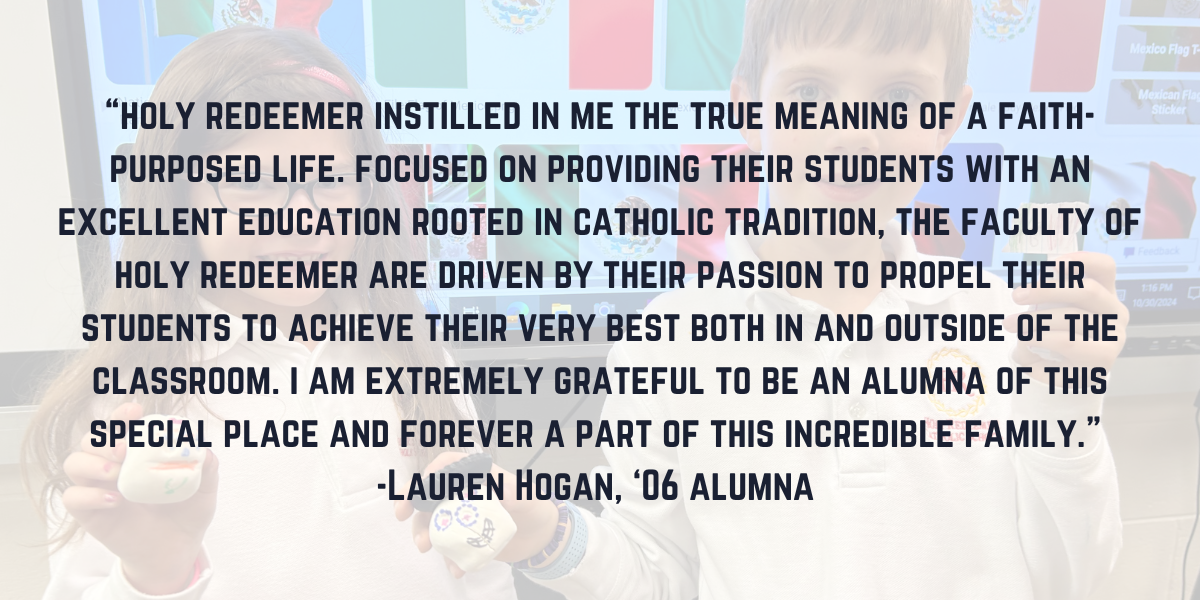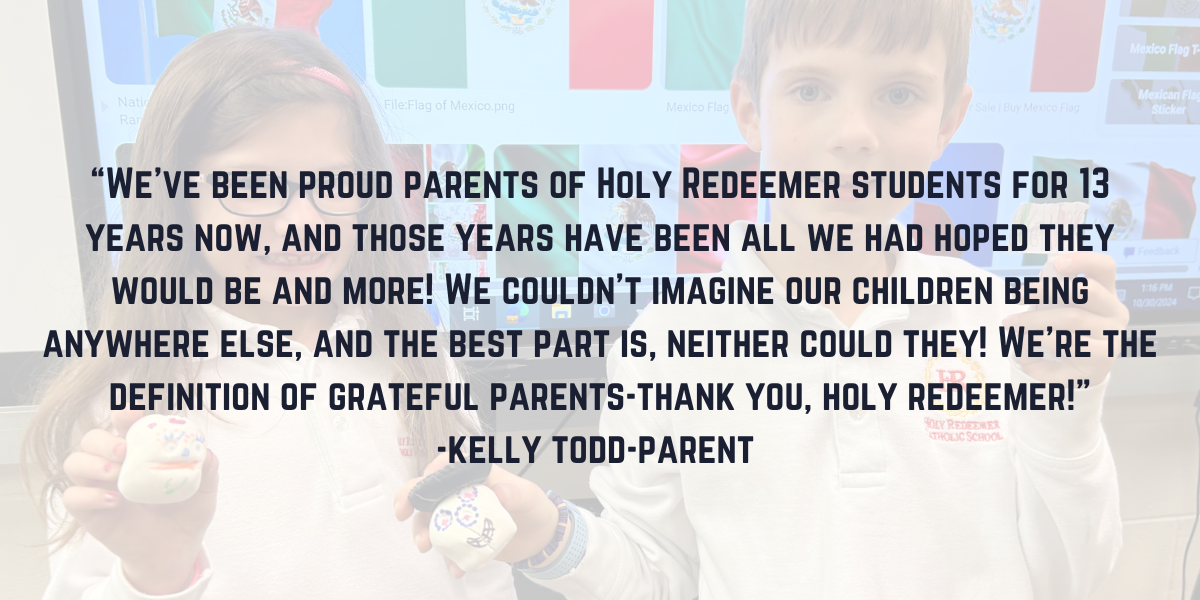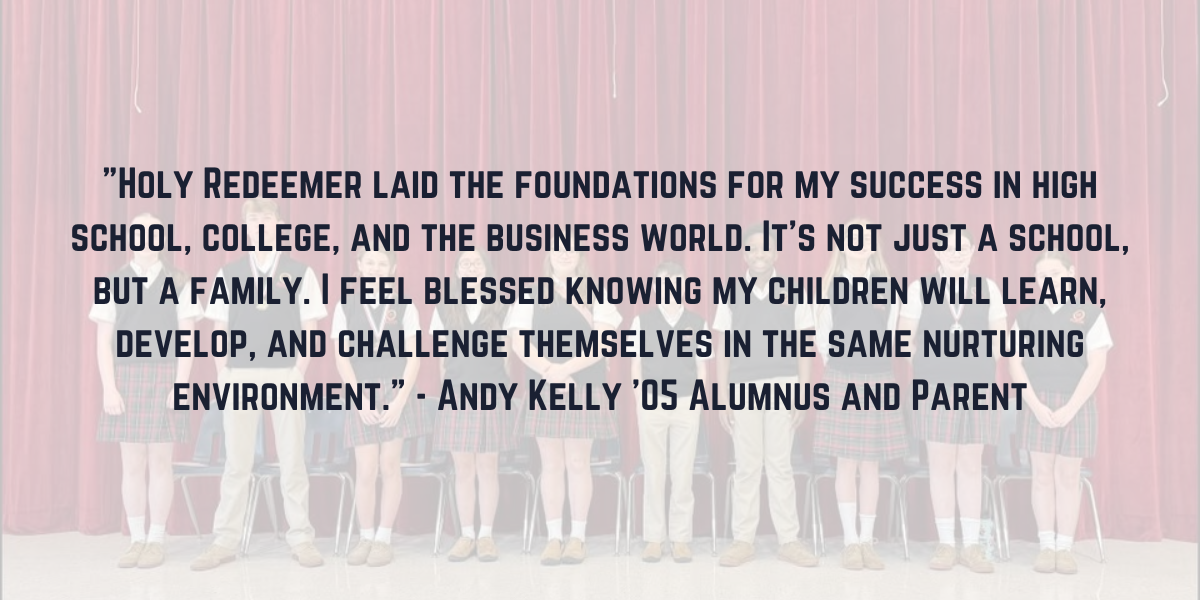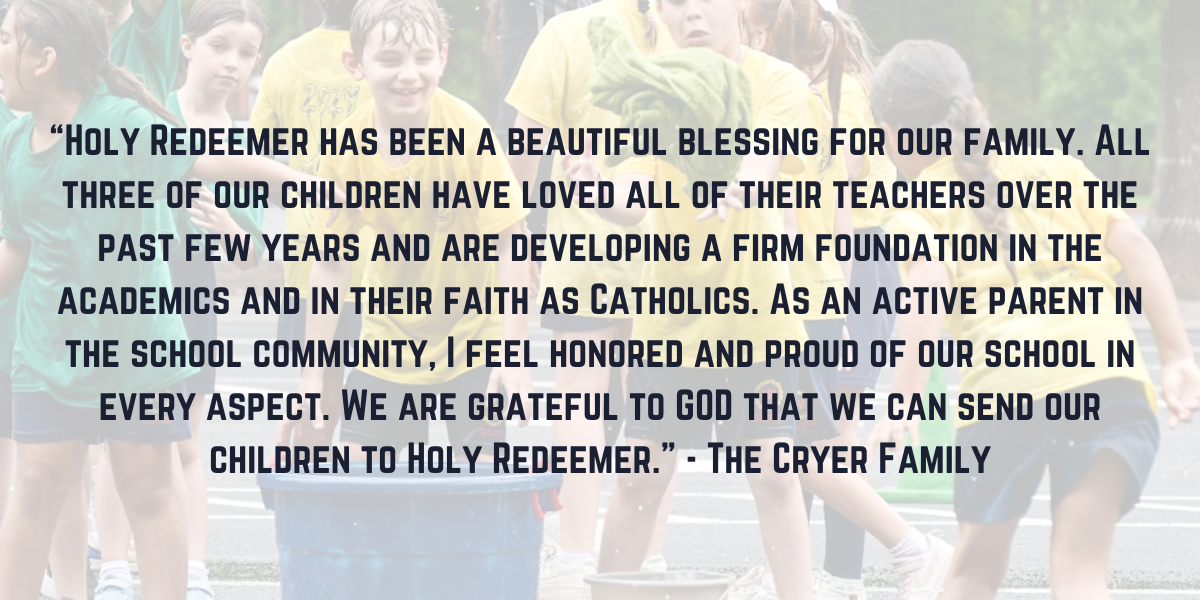Grade 3
Students entering the third-grade advance into the intermediate level at Holy Redeemer. Classes at this level have a maximum of twenty-eight students staffed by a full-time teacher. Third grade instruction continues to emphasize the fundamental skills in math and reading. Increased emphasis is placed on the study of science and social studies. Religion is core to the curriculum. Classes in technology, world language, physical education, art, music, and library provide increased learning opportunities.

The archdiocesan Religion curriculum is followed in creating the program of Religion instruction in grade three. Participation in religious instruction, liturgical celebrations, and service projects contributes to the faith formation of the students. The study of the Bible is a focal point in our weekly religious studies.
Reading and writing skills are linked through the study of literature. A variety of independent and group activities are used to enhance the learning process. English continues to be taught using Loyola Press’ Voyages in English. Students are assigned daily writing activities to support the learning process. Novels and a variety of reading genres are an integral part of the program and are interspersed between reading units in the student anthology.
The Sadlier math program focuses on the application of computational skills along with problem-solving strategies. Through whole group instruction and cooperative learning, children explore mathematical concepts and apply them to everyday life skills. Students work to maintain addition and subtraction skills as well as toward the mastery of multiplication and division facts. A mixed daily review strengthens computation and mathematical skills.
At this level, the archdiocesan curricula in Science and Social Studies dictate a more formal concentration of instruction in concept areas. Increased independent reading skills at this level allow for more formalized direct instruction, which is assisted by exploratory pursuits. Independent and group projects and activities reinforce concepts taught and allow students to further explore ideas.
Various instructional methods are used in the third-grade classroom. All third-grade students receive instruction from one of two teachers in four major content areas. The students transition from small to large group instruction and are encouraged to become independent learners. Assignments are longer with multiple activities and assessments. Study skills are developed, and the focus begins to shift from memorizing facts to the ability to apply the knowledge learned. As the year progresses, more responsibility for learning is placed on the child.
Grade 4
As developmentally appropriate, the fourth grade continues focusing on responsibility and independent learning. Students move between two teachers for instruction in all content areas. The students in fourth grade also study music, art, physical education, and world language. Weekly library and technology classes are also taught.
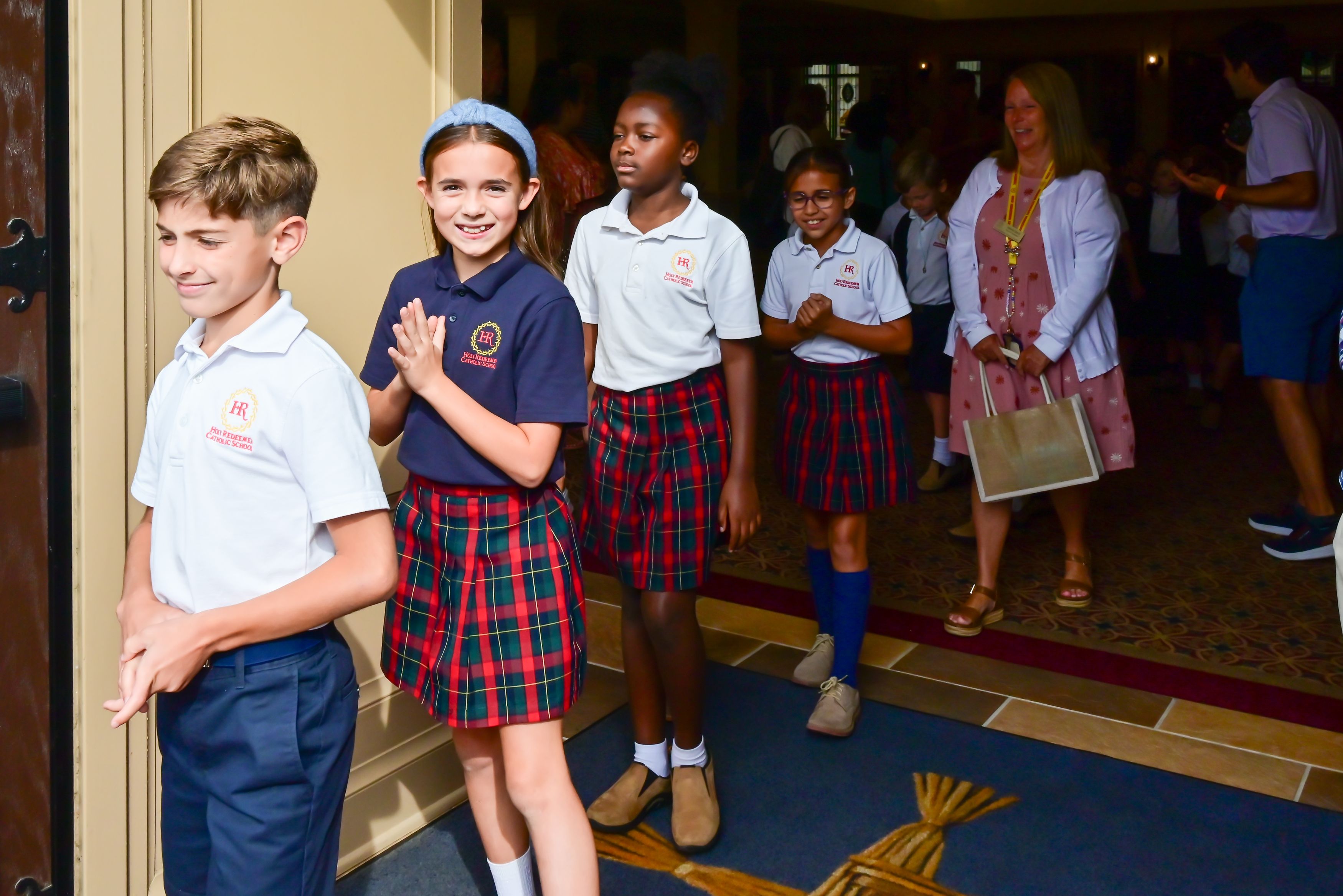
As per archdiocesan mandates, through Religion classes, students are instructed daily in the four pillars of the Catholic faith and are encouraged to live their faith through the many opportunities provided to perform service. Students participate in liturgical celebrations weekly and take an increased role at this level in participating in liturgical experiences and service opportunities.
Reading is primarily taught through the use of novels along with a literature-based anthology. The emphasis in reading is on teaching the students strategies that will help to develop their comprehension skills, including making inferences and predicting outcomes. Small groups and partner work are utilized to promote collaborative discussions among learners. The Voyages in English program continues to develop grammar, vocabulary, writing, and outlining skills.
Daily Math instruction solidifies previously learned and newly acquired skills. Computation, application, and problem solving are emphasized. Through whole group instruction and cooperative learning, children explore mathematical concepts and apply them to everyday life skills.
Increased instructional time is devoted to education in Science and Social Studies concepts and objectives. Early American history is the primary focus of Social Studies instruction for grade four students with an introduction to Georgia state history. Scientific inquiry, environmental science, as well as concepts in life, physical, and earth science are explored, and previously learned skills are applied in a more in-depth study at this level.
Grade 5
Preparation of students for the transition into Middle School is a primary goal at the fifth-grade level. Students continue to move between two teachers for instruction in all content areas. In addition to learning the core subjects of Religion, Language Arts, Math, Social Studies, and Science, students are instructed in a semester of both Spanish and French in preparation for selecting a language for the middle school course of study. Instruction in technology, physical education, art, music, and library is also part of the fifth-grade experience.
.jpg)
Religion classes, liturgical celebrations, and service projects are an important part of the spiritual experience for every child. Each of these components of the Religion program takes on a more independent form at this level. Students are now responsible for the planning and implementation of service in preparation for middle school service requirements. Religion instruction moves toward a more personal reflection of faith and an individual’s relationship with God and the Church community.
The Math curriculum continues to teach fluency of basic mathematics skills as well as application and critical thinking, which are paramount in grade five. Concrete modeling through direct teacher instruction helps develop understanding. Application of skills develops abstract and critical thinking proficiencies. Multiple methods and strategies for problem-solving are used.
The fifth-grade language arts program uses a diverse collection of trade books and resource materials as well as a literature-based anthology to enhance student learning. When reading at this level, students are taught comprehension and reading skills, which enable them to independently acquire and apply knowledge. Written expression includes the writing process, grammar, and mechanics. The Voyages in English program continues to develop and support language arts, and formal vocabulary instruction is used to enhance student vocabulary.
The study of the Western hemisphere is the primary focus of Social Studies instruction for grade five students. Geography, citizenship, and economics are included within the formal course of study. In the content area of science, continuation of the concepts of scientific inquiry, environmental science as well as concepts in life, physical, and earth science are explored, and previously learned skills are applied in a more in-depth study.



